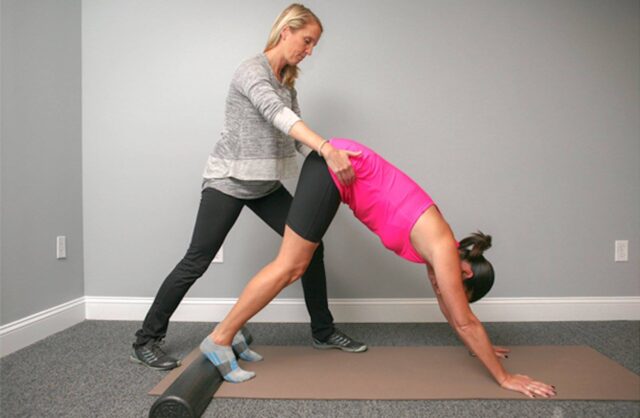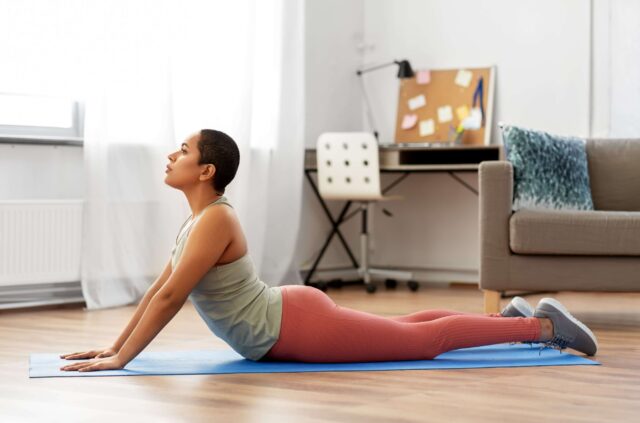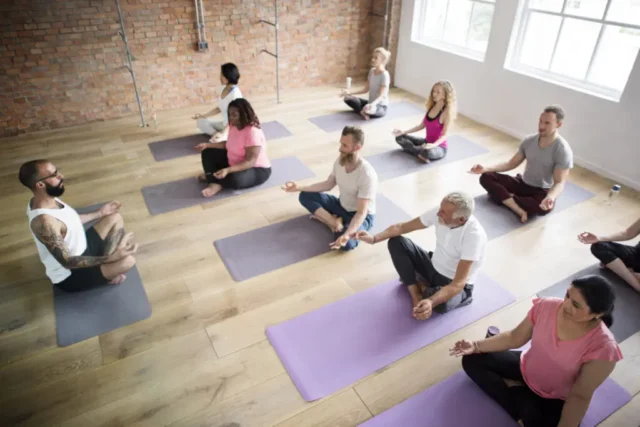
Yoga has gained popularity as an effective complementary option to traditional physical therapy. It can help individuals recover from injuries, manage pain, and improve physical function. Explore the benefits of physical therapy yoga and how it can improve your health.
Physical Therapy Yoga

Yoga involves a series of postures, breathing exercises, and meditation techniques that can help improve flexibility, strength, and balance. Understanding the benefits of yoga can help you make informed decisions about your treatment plan. Yoga and physical therapy combined may enhance physical function and reduce pain.
Certain medical conditions, such as arthritis or chronic pain, may require special consideration when starting a new exercise program. A healthcare provider can help you develop a yoga program that addresses your medical concerns to keep you comfortable while doing yoga.
Benefits of Yoga as Physical Therapy

Yoga can help improve flexibility and range of motion. This helps people recovering from injuries or surgeries that have limited mobility. By incorporating yoga poses into a physical therapy program, patients may be able to increase their range of motion.
Physical therapy yoga may also improve strength and balance. Many yoga poses require multiple muscle groups, which can help improve overall strength and stability. This can help patients who are recovering from falls or other injuries that impact their balance.
Yoga can also help reduce cortisol levels, a hormone associated with stress. Those who can benefit are patients dealing with chronic pain or other conditions that can be exacerbated by stress.
Practicing yoga helps improve the mind-body connection, which is the relationship between your thoughts, emotions, and physical sensations. When stressed, anxious, or in pain, your body responds by tensing up, breathing faster, and releasing stress hormones. Yoga can help counteract those responses by slowing down your breathing and reducing tension and stress.
Yoga is a mindful practice. During a yoga practice, you focus your attention on your breath, body sensations, and movement to make you more aware of your physical and emotional state. This awareness helps you better understand your body’s responses to stress and pain and to learn how to manage them.
Specific Yoga Poses for Physical Therapy

Here are some specific yoga poses that may help during physical therapy:
• Child’s Pose: This pose is a gentle stretch for the back and hips. To perform this pose, kneel on the ground and sit back on your heels. Lower your forehead to the floor and stretch your arms out before you.
• Downward-facing Dog: It can help stretch the entire body, including the shoulders, back, hamstrings, and calves. Start on all fours while placing your hands slightly in front of your shoulders. Lift up your hips and try to keep a straight back. Legs can be straight or bent, depending on ability. Heels should push toward the floor.
• Warrior II: This pose can help improve strength and balance in the legs and core. Stand with your feet hip-width apart and step one foot back. Turn your back foot outward and rotate the hips and upper body to face the same direction as your foot. Bend your front knee. Stretch your arms to the sides, keeping them parallel to the ground. Look forward.
• Tree Pose: The tree pose can improve balance and strengthen the muscles in the legs and core. Stand with your feet hip-width apart and shift your weight onto one foot. Pick the other foot off the ground and put the sole against the inner thigh of your standing leg. Place your hands together in front of your heart.
• Cobra Pose: It improves flexibility and strength in the back muscles. Lie on your stomach with your hands underneath your shoulders. Inhale and lift your chest off the ground, straightening your arms as much as possible while keeping your elbows close to your sides.
Safety Considerations When Using Yoga for Physical Therapy

It is important to consider safety when practicing yoga. Here are some safety considerations to keep in mind when using yoga for physical therapy:
Consult with a Healthcare Provider: Before starting a yoga practice, it is important to consult with a healthcare provider to ensure that yoga is safe for your specific health condition.
Choose a Qualified Instructor: Make sure your instructor is qualified and has experience working with individuals with physical limitations or injuries. Look for a teacher who is knowledgeable about anatomy, physiology, and modifications for injuries.
Use Props: Props such as blocks, straps, and blankets can be used to help you achieve proper alignment in poses and to avoid strain or injury.
Practice Mindfulness: Mindfulness is the practice of being present at the moment and aware of your body and breath. This can help you stay focused on proper alignment and avoid overexertion.
Listen to Your Body: Pay attention to your body’s signals and adjust your practice accordingly. If a pose is causing pain or discomfort, modify it or skip it altogether.
Avoid Overexertion: Avoid pushing yourself too hard in your practice. This can lead to injury or exacerbate an existing injury or condition.
Stay Hydrated: Drink plenty of water before and after your practice to stay hydrated.
Take Breaks: Take breaks as needed during your practice. Resting in Child’s Pose or Corpse Pose can help you recharge and avoid overexertion.
Be Patient: Remember that healing takes time, and progress in your physical therapy may be gradual. Be patient with yourself and listen to your body’s needs.
Choose the Right Specialist

Yoga can be a great way to complement or continue a physical therapy regimen. As a low-impact form of exercise, it is suitable for people of all ages and fitness levels. You can customize it to meet the specific needs of each individual. By choosing yoga for physical therapy, individuals can improve their overall physical, mental, and emotional well-being. Choose a professional physical therapy yoga instructor today.









